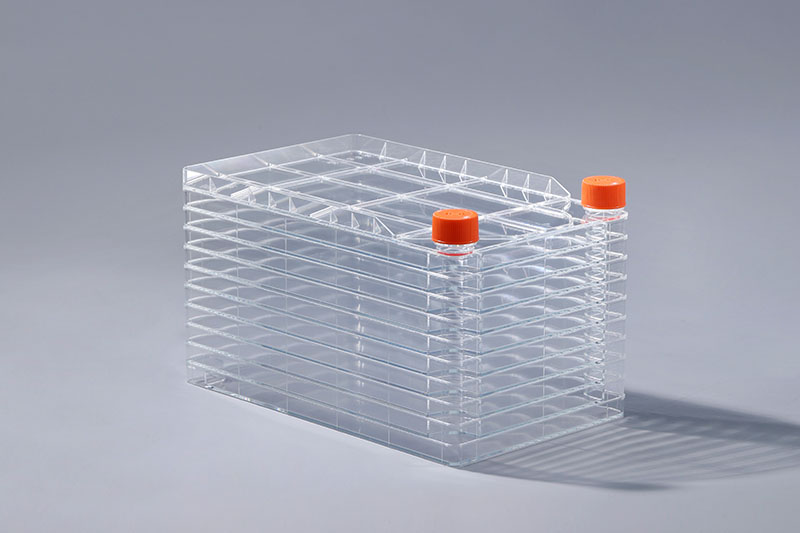Клеточные фабрикипредставляют собой тип расходных материалов, которые широко используются в крупномасштабных культурах клеток. Клетки - очень хрупкие организмы. Культура клеток in vitro требует особой среды, основным требованием которой является стерильность.
In vivo система детоксикации и иммунная система могут противостоять вторжению микроорганизмов или других вредных веществ, В процессе культивирования in vitro клетки лишены защиты иммунной системы организма и теряют способность защищаться от микроорганизмов и обезвреживать вредные вещества. Чтобы клетки могли расти и размножаться in vitro, необходимо обеспечить стерильность рабочего места, соблюдение правил личной гигиены, стерильность реагентов и сред, а также асептическую обработку. грибы. Микоплазмы не обладают летальной токсичностью, могут сосуществовать с клетками в течение длительного времени и потенциально воздействовать на клетки, но имеют небольшие размеры и их трудно идентифицировать. Его можно обнаружить с помощью окрашивания красным лишайником или Hoechst33342. Бактерии быстро размножаются, могут размножаться в большом количестве за короткое время и вырабатывать токсины для уничтожения клеток. Существует множество видов грибов, видимых невооруженным глазом, плавающих на поверхности культуральной среды, и они могут быть нитчатыми, трубчатыми или дендритными. загрязнения следует проанализировать в соответствии с конкретной ситуацией, а затем лечение следует проводить в соответствии с ситуацией загрязнения. Если загрязнение очень серьезное, рекомендуется выбросить культуру и провести ее повторное культивирование.
Common microbial contaminations in cell factory culture include mycoplasma, bacteria, and fungi. Mycoplasma has no lethal toxicity, can coexist with cells for a long time, and has potential effects on cells, but it is small in size and difficult to identify. It can be detected by means of lichen red or Hoechst33342 staining. Bacteria proliferate quickly, can multiply in a large amount in a short time, and produce toxins to kill cells. There are many kinds of fungi, which are visible to the naked eye, floating on the surface of the culture medium, and can be filamentous, tubular or dendritic.
If bacterial contamination occurs in the cells in the cell factory, the source of contamination should be analyzed according to the specific situation, and then the treatment should be carried out according to the contamination situation. If the contamination is very serious, it is recommended to discard the culture and re-cultivate it.
The FAI climbed 5.9 percent year-on-year in the first 11 months of 2018, quickening from the 5.7-percent growth in Jan-Oct, the National Bureau of Statistics (NBS) said Friday in an online statement.
The key indicator of investment, dubbed a major growth driver, hit the bottom in August and has since started to rebound steadily.
In the face of emerging economic challenges home and abroad, China has stepped up efforts to stabilize investment, in particular rolling out measures to motivate private investors and channel funds into infrastructure.
Friday's data showed private investment, accounting for more than 60 percent of the total FAI, expanded by a brisk 8.7 percent.
NBS spokesperson Mao Shengyong said funds into weak economic links registered rapid increases as investment in environmental protection and agriculture jumped 42 percent and 12.5 percent respectively, much faster than the average.
In breakdown, investment in high-tech and equipment manufacturing remained vigorous with 16.1-percent and 11.6-percent increases respectively in the first 11 months. Infrastructure investment gained 3.7 percent, staying flat. Investment in property development rose 9.7 percent, also unchanged.
 English
English



















































